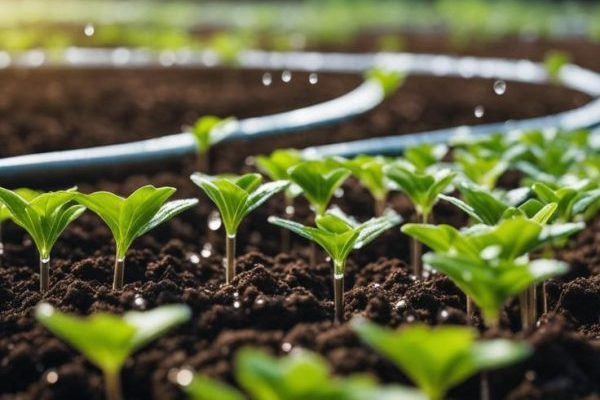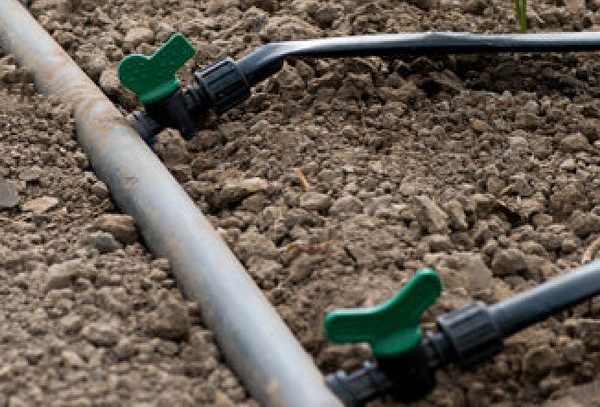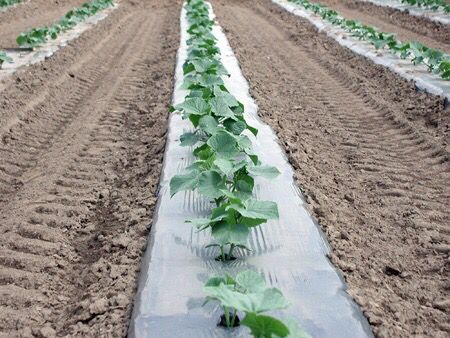In today’s world, agriculture is no longer limited to traditional methods. One of the most significant developments in the past few decades has been the introduction of polymer materials into the agricultural sector. With their lightweight nature, high durability, flexibility, and resistance to environmental factors, polymers have secured a prominent place among modern agricultural solutions.
In this article, we will take a closer look at the practical applications of polymer materials and polymer compounds in three key areas of the agricultural industry: irrigation systems, agricultural films, and agricultural product packaging.
1. Application of Polymer Compounds in Irrigation Systems
Irrigation systems play a crucial role in improving the productivity of agricultural lands. In recent years, due to growing water scarcity and climate change, the need for modern irrigation techniques has become even more vital. By using polymer compounds, we can design and manufacture more durable, cost-effective, and long-lasting irrigation equipment.
Key Features Required from Polymer Materials in Irrigation Systems:
| Feature | Description |
|---|---|
| UV Resistance | Protection against degradation caused by sunlight |
| Mechanical Strength | Withstanding high pressure and physical impacts over time |
| Chemical Resistance | Resistance to fertilizers, pesticides, and dissolved chemicals in water |
| Flexibility | Easy installation and maintenance under varying environmental conditions |
Polyethylene (PE) is one of the most commonly used polymers in the production of pipes, fittings, elbows, and drip emitters. By using modified PE compounds, we can achieve better performance, longer service life, and higher resistance in irrigation system components.
2. Agricultural Films: A Polymeric Partner for Greenhouses and Farmlands
Agricultural films have become one of the most transformative tools in modern farming. By utilizing these films, we can control plant growth conditions, reduce water consumption, and ultimately produce higher-quality crops.
2.1 Greenhouse Films
In greenhouse applications, multi-layer polymeric films (commonly made from PE and EVA) allow us to precisely control light, humidity, temperature, and ventilation. By engineering specific polymer compounds, we can produce films with anti-fog properties, UV protection, thermal control, and even the ability to filter specific light wavelengths to support optimal plant growth.
2.2 Agricultural Mulch Films
Polymeric mulch films are laid over the soil surface to prevent water evaporation, suppress weed growth, and moderate sudden temperature fluctuations in the soil. Depending on environmental requirements, we can formulate compounds with different colors and specialized physical properties to suit specific agricultural needs.
| Film Type | Application | Key Advantage |
|---|---|---|
| Transparent Greenhouse Film | Greenhouse roof covering | Light and temperature control |
| Anti-Fog Films | Internal condensation prevention | Enhanced photosynthesis efficiency |
| Black or Silver Mulch Films | Soil coverage in open fields | Weed suppression and moisture retention |
3. Agricultural Product Packaging Using Polymers
Packaging is the final stage of production—but it is the first thing a customer sees. We must ensure that our packaging not only protects the product but also reflects its quality. Thanks to their lightweight, durability, and excellent printability, polymers are our top choice in this area.
Types of Packaging and Polymer Material Characteristics
| Packaging Type | Polymer Type | Key Feature |
|---|---|---|
| Large grain storage bags | PE or PP | High mechanical strength |
| Multi-layer pouches | PET/AL/PE | Moisture and light resistance |
| Simple flexible packaging | Lightweight PE | Cost-effectiveness and low weight |
By selecting the right polymer compounds, we can produce packaging that is resistant to impact, moisture, UV radiation, and microbial contamination—ensuring product protection and extended shelf life.
4. Special Application: Hydrogels in Agriculture for Arid Regions
In areas where water scarcity is a major concern, the use of superabsorbent polymer materials (hydrogels) can help us store water and make it available to plant roots when needed. These gels are capable of absorbing water up to several times their own weight and gradually releasing it over time. Specially formulated polymer compounds play a crucial role in the production of these materials.
Conclusion
As we move toward more advanced and sustainable agriculture, we cannot overlook the importance of polymers. By designing and applying tailored polymer compounds, we can offer practical solutions for more efficient irrigation, better environmental control, and safer, longer-lasting packaging of agricultural products.




